

Twitter or X is a popular platform for online discussions and microblogging that many people use to vent out frustrations, network or express opinions. However, sometimes users might abuse it’s anonymity and convenience for fraud, cyberbullying, harassment or other offensive activities. In these cases, exposing the real identity of a person is a must to bring them to justice. This OSINT Twitter guide by X-Ray Contact will come in handy for you to unveil a person behind the Twitter account even with minimum budget and effort.
Why You May Need to Find Twitter Account?
Compared to Facebook or Instagram, Twitter might seem a less important platform for OSINT investigations as people often choose to stay anonymous on this network. However, in fact, Twitter can be a gold mine of exclusive insights users might not have posted elsewhere. Consider the following scenarios:
- Communication Patterns. One’s X account can reveal how the person of interest tends to interact in a more informal setting. Analyzing their tweets, replies, and networks can provide clues about their personality, interests, and social circles. For example, a user might have a history of controversial posts, flirting or online fights in the comments.
- Geolocation and Event Tracking. Many Twitter users share their locations and attend events they have discussed in their tweets. By analyzing geotagged tweets and event-related content, investigators can track the movements and engagements of the person of interest. Basically, the OSINT experts just compile the information the user has given up themselves online to track their place of residence.
- Real-Time Updates. Compared to some other social media, Twitter is a platform where news and events unfold quickly. Monitoring the person of interest’s X account can provide the latest clues on their activities, habits and any connections. Many people tweet about changes in career, love life, friendship or location. That’s why an active Twitter account can be a superior source of knowledge about up-to-date evidence.
- Network Investigation. At its core, X is a platform that accommodates raw interpersonal communication in the comment section. Analyzing the user’s followers, who they follow and interactions with other users can uncover relationships, associations and potential liaisons with other individuals or organizations. For instance, you can find out who are the members of their friend group and then go through the profiles of these connections to gather additional clues about the person of interest.
Who Might Choose to Stay Private on Twitter?
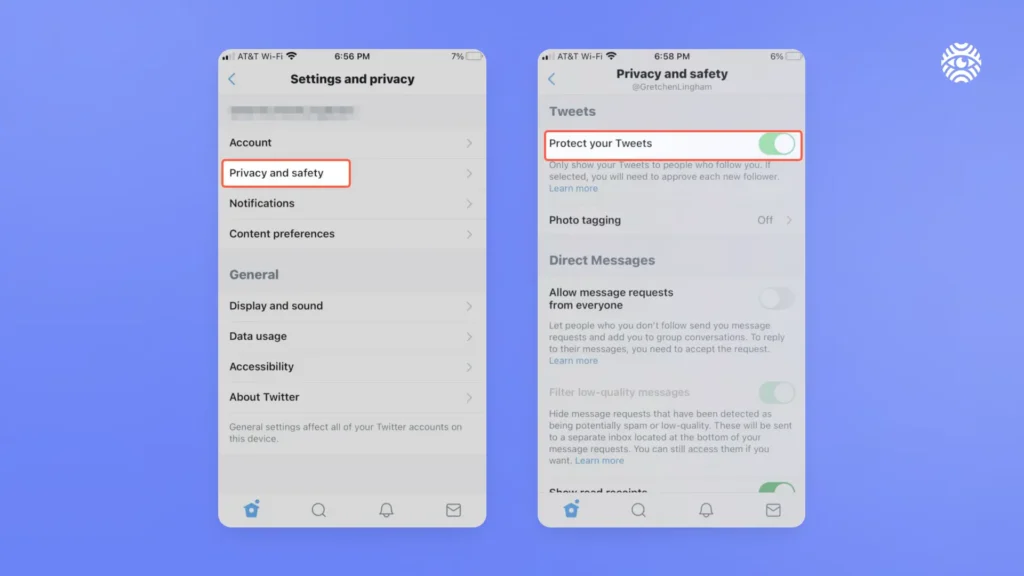
Some users take precautions in order to keep their X account hidden from the public eye. The person of interest is likely to stay anonymous or not share their Twitter profile openly with others under such circumstances:
- Cyberbullies and Hate Accounts. Anonymity provides a sense of security for online harassers, allowing them to express harmful opinions or engage in abusive behavior without fear of accountability. Such users choose anonymity to evade detection by victims, law enforcement or platform moderators.
- Cheaters. This category of people tends to keep their Twitter accounts private to prevent their partner or spouse from discovering evidence of their infidelity, such as direct messages, tweets, or interactions with other individuals involved in the affair. Moreover, such users might be especially wary of their digital footprint if they organize dating scams.
- Fraudsters. Having a private X account is popular among criminals who perpetrate fraudulent schemes, such as scams, identity theft, or financial fraud. By concealing their identities and communication, fraudsters can minimize their traceability and reduce the likelihood of facing the consequences of their actions.
- Job Seekers. Some people may keep their Twitter accounts private to maintain a professional image or protect their personal information from potential employers, colleagues or competitors. This is especially the case if the person tends to post controversial content online.
- Undercover Investigators or Law Enforcement Personnel. Those working in high-risk fields often maintain private X accounts to protect their identities and operational security. This category of users often is more privacy-conscious due to the nature of their employment.
- Celebrities and Public Figures. High-profile individuals may prefer to keep their real, non-professional Twitter accounts private to control access to their personal lives and avoid unwanted attention or harassment.
- Whistleblowers. Activists involved in sensitive or controversial issues may retain their Twitter accounts hidden to avoid retaliation or persecution.
The Best Way of Finding Someone Online
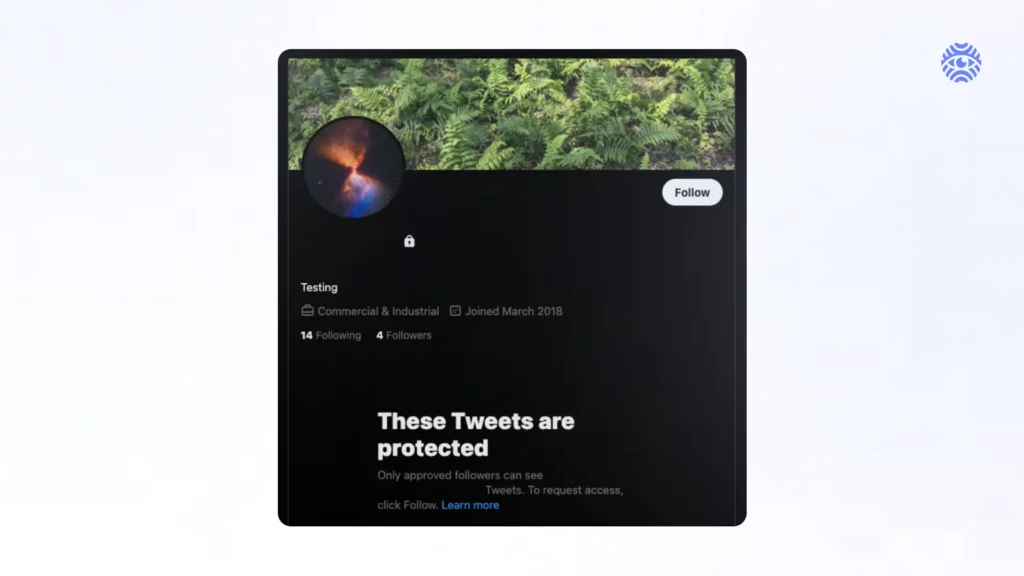
If you’ve decided that scanning X to find Twitter account is an appropriate method for your investigation, here are tips and tricks you should take into account as they are the most useful means to reveal a person behind the profile.
Use OSINT Tools to Find Twitter Account
If the simple methods to find Twitter account have failed, take time to test OSINT methods in order to disclose a person hiding behind a Twitter account.
Find Out Who Is Behind a Twitter Account With X-Ray Contact
X-Ray Contact provides you the ability to look up a user with just a Twitter link. This OSINT instrument operates like a data aggregator that is able to find Twitter account information based on your entry in the databases of more than 33 providers. Follow these steps to get the most reliable output:
- After going through to the X-Ray Contact page, opt for “Socials” or “Username Check” as a channel on the “Platform” page.
- Paste the URL to the Twitter account and wait while the algorithm processes the information.
- If the search is successful, go through the report with the person’s digital footprint, including real name, other social media usernames, location, links to external sites, images, relations and more.
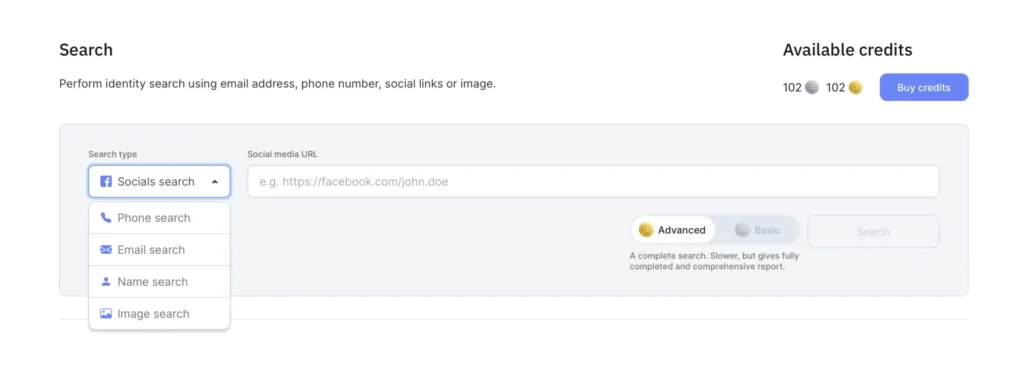
Check Their Bio
Some users might provide valuable clues about their real identity in the bio of a Twitter account in order to describe themselves. Here are things you should keep in mind when doing a superficial profile check:
- Look for any personal details such as name, location, occupation, interests or connections that may provide clues about the individual’s identity.
- Sometimes, the username itself may contain the person’s real name or a variation of it. Pay attention to any number patterns or words that could hint at the person’s identity. For example, the username @walker95 might reveal the real surname and year of birth of the target.
- Check if the Twitter bio includes links to external websites such as personal blogs, portfolios, LinkedIn profiles or other social media accounts.
- Look for any mentions or tags of other Twitter accounts in the bio. These accounts could be friends, family members, colleagues, or organizations associated with the person you’re investigating.
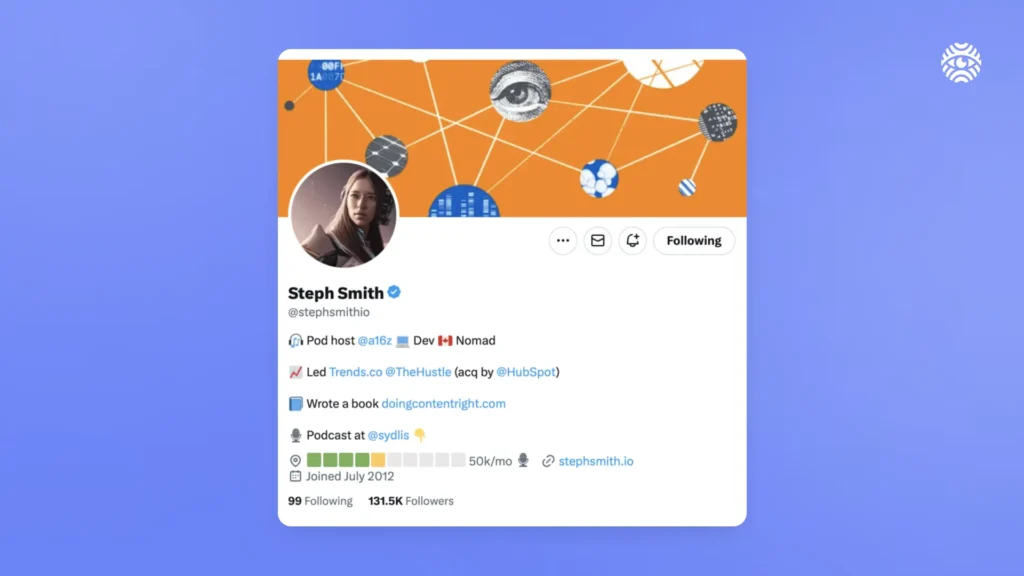
Keep in mind that Twitter users can update their bios at any minute. If you’re monitoring a specific account over time, regularly check for any changes or updates to the account description. Once you’ve gathered information from the Twitter bio, compare it with other online sources such as databases, search engines or websites.
Conduct a Reverse Image Search to Find Twitter Account Owner
You might collect an archive of photos that the person has shared on Twitter in order to verify their identity and unveil more details about their life through the reverse image search. There are a few methods you can utilize in order to know who is behind a Twitter account with a photo.
X-Ray Contact Reverse Image Search
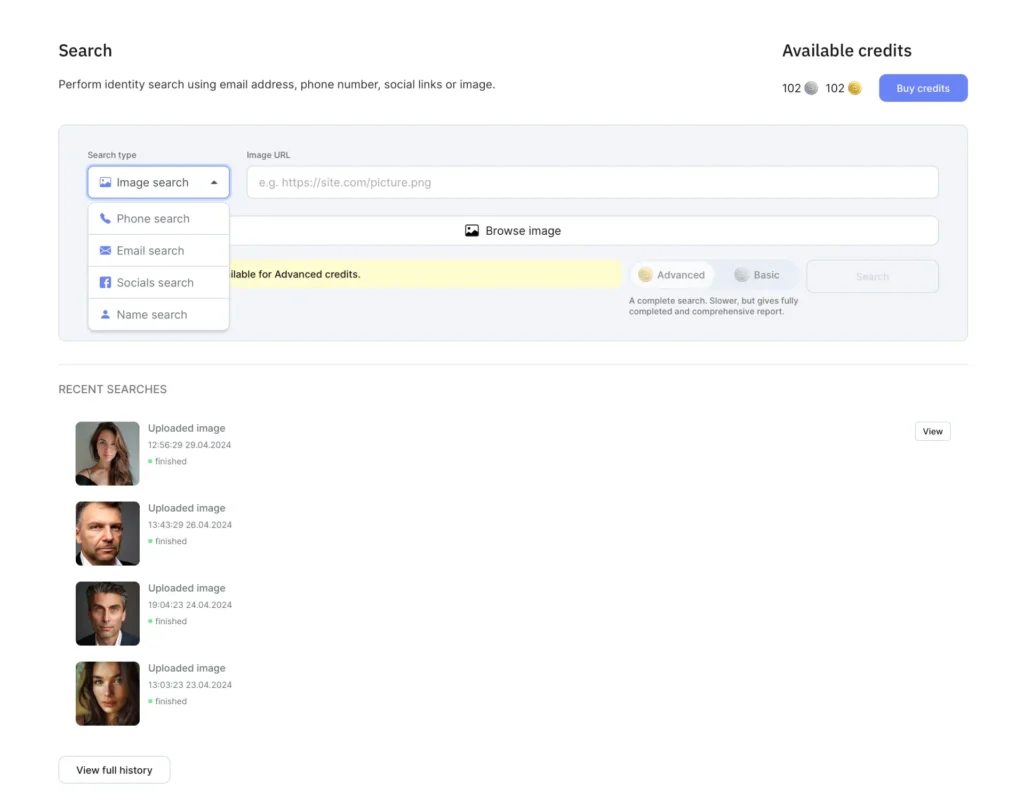
Use this service if you have a task to find person by photo. The uniqueness of the X-Ray Contact is that it scans the face and seeks matches in the provider databases rather than just looking for similar pictures online. The process is simple even for the amateurs:
- Go to the “Platform” section of the website and choose “Image” as a search channel of choice.
- Then, you have to either provide a link to the Twitter post or an account profile picture with the user’s photo or upload it from your device.
- If the target has been present in the system, expect to receive a report with digital footprint of the person. It will be helpful if you wonder how to find someone on Twitter by email, name, location, demographic data, connections etc. It is an easy method to find out who is behind a Twitter account with just a few clicks.
Google Images Search
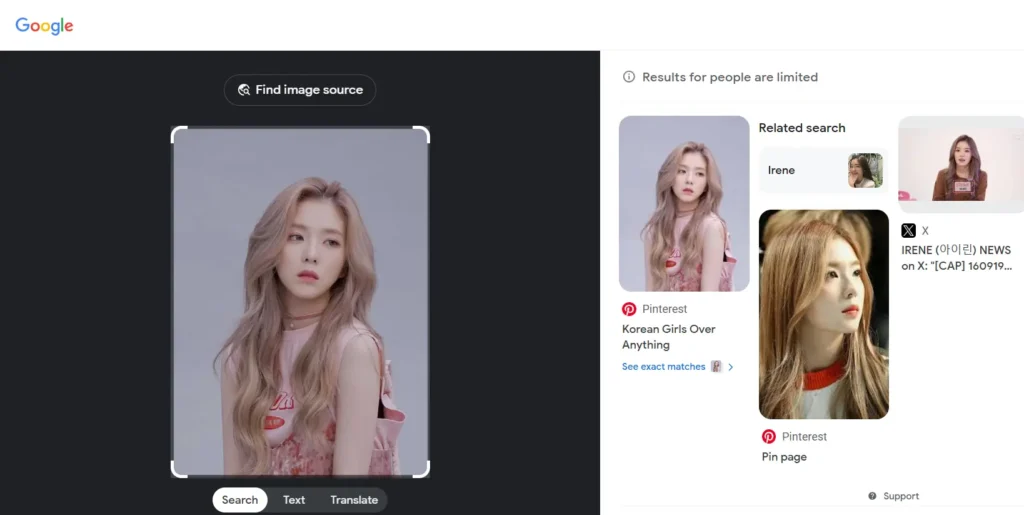
This Twitter image search method works best if you want to reveal whether any pictures have been previously posted elsewhere online. Here’s how it goes:
- Type “Google Images” into your browser and go to the website.
- Click on the camera icon in the search bar to upload the image you’ve selected. You can either drag and drop the image into the search bar or select the photo from your device.
- Google will then display search results that include web pages where the image appears, visually similar images and related content. Review this data to identify any websites, social media profiles or online platforms where the image is used. However, be aware that the algorithm might just give you a report with pictures that have some similar elements, lighting or angle rather than analyze the person in a photo.
Do a Cross-Platform Social Media Search
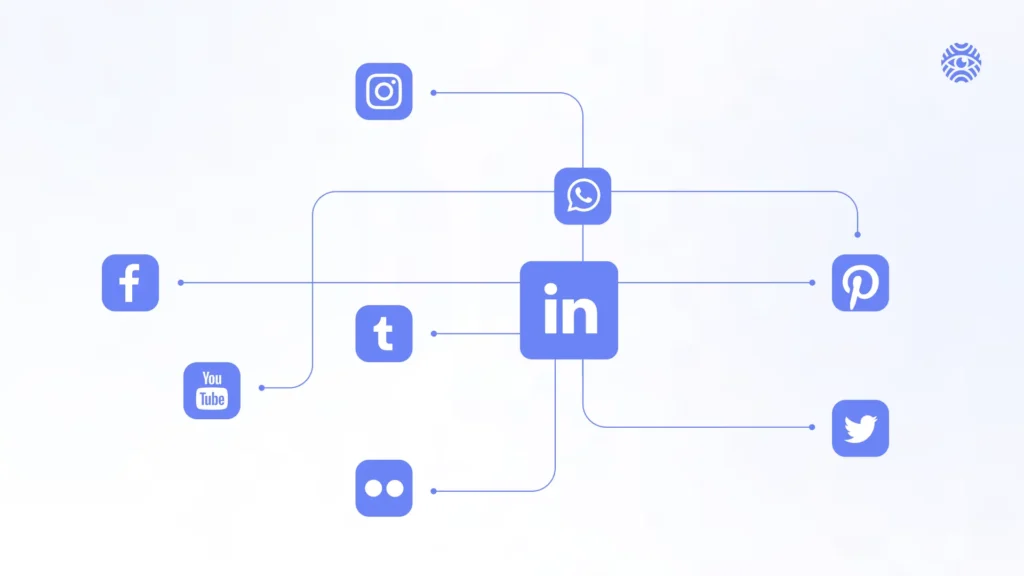
If you try to find Twitter account leads to the real identity of a person behind a Twitter account, it is useful to scan other social media they use. Here’s how you can derive more data based on the external links:
- Facebook Profile. Check if the Twitter bio or tweets include a link to the person’s Facebook profile. By scanning their Facebook page, you can gather personal information such as their full name, location, photos, interests and liaisons with friends and family members.
- Instagram Account. If the person has linked their Instagram, visit their profile to view photos, videos, stories, and captions that may provide insights into their lifestyle, hobbies, interests, and social circle. Moreover, you can use it to compare the photos they post on Twitter and Instagram to verify their identity or do a reverse image search.
- LinkedIn Profile. If the Twitter user history contains a link to the person’s LinkedIn profile, it can be a great source of professional information such as employment history, educational background, skills, and connections. This can help verify the person’s identity and provide context about their professional life.
- Snapchat. In case the Twitter account includes a Snapchat username or handle, search for the person’s profile using Snapchat. If the account is public or if the person has shared their username publicly, you may be able to view their snaps, stories, and profile information. Such a source is especially important as Snapchat content is even more recent and fleeting than Twitter. Furthermore, pay attention to the Snap Map feature on Snapchat, if the person has enabled it, to see their recent location updates and discover where they’ve been active. This can help verify their whereabouts and provide context about their lifestyle.
- Reddit. This platform differs a lot from typical social media as it is a forum with an enhanced level of anonymity. If the person has included a link or a screenshot with a username on their Twitter, you can easily reveal their Reddit profile. Look for any posts, comments, or interactions made by the user across different subreddits. This can provide insights into their interests, opinions and online activity in a more unfiltered environment. Read any personal anecdotes, discussions, or information that could help identify them or corroborate details from their Twitter bio.
- Telegram. Since Telegram is primarily an instant messaging service, it might be more challenging to collect evidence with it if you have laid hands on the Telegram account name or a person’s phone number linked to this platform. Nonetheless, you can explore any public groups or channels that the person is a member of on Telegram if you both are subscribed to it. Here, you can use your HUMINT skills to indirectly collect evidence and ask the person or their affiliates questions that may lead to uncovering one’s real identity.
- Discord. If the person has posted a Discord link on Twitter, it can be a horn of plenty when it comes to gathering evidence for the investigation. For example, joining the Discord server mentioned in the tweet grants access to conversations and interactions within that server. Such Discord servers typically log timestamps of messages and user activity. Analyzing these logs can help establish timelines, patterns of behavior, and correlations between the person’s online activities on Twitter and Discord. You can use this data to scan mentions of personal details, references to other online profiles, or interactions with individuals who know them offline.
Do a Reverse Username Search
If the bio is clear and you failed to find any external links, you can still work with what you have and investigate with only a username. Follow these directions to find Twitter account:
- Start by entering the username into a search engine like Google or Safari. Enclose the username in quotation marks (e.g., “@walker95”) to search for exact matches. Review the results to identify any online profiles, forum posts, social media accounts or other mentions associated with the username.
- Utilize online username search tools or directories that aggregate information from various sources. These instruments may help identify social media profiles, email addresses, or other online accounts associated with the username.
- In case the username is associated with a personal website or blog, employ a look-up tool to search for domain name registrations. This step can help identify additional online properties owned by the individual and give you more clues about the real identity of a person.
What to Do After You Find a Twitter Account?
If you followed all directions and managed to disclose who is behind the Twitter profile, you can now make various decisions based on your intentions and needs. Here are some of the most plausible scenarios:
- Continue the Investigation. Use data on the account owner’s real personal details for additional online searches, checking other social media profiles, or consulting public records.
- Keep Collecting Data. If your research is ongoing, you might need to continue scanning the updates and enlarging your evidence base about the person. Be mindful of false or misleading information, fake accounts and privacy concerns in this next stage of your research.
- Verify New Information. Check the authenticity of the further information from the X account by cross-referencing it with multiple sources and conducting a deeper investigation. Pay attention to inconsistencies, discrepancies, or red flags that may require additional scrutiny. In case you notice that the person behind a Twitter account attempts to deceive others about their identity, you can take action and provide evidence that would expose the lies in order to protect the potential victims.
- Take Legal Action. If the individual behind the Twitter account has engaged in illegal activities or violated Twitter’s terms of service, feel free take legal action, report them to the appropriate authorities or platform moderators.
Is It Legal to Trace a Twitter Account?
Yes, if you use OSINT methods and don’t employ any hacking techniques. You can find Twitter account with the use of only data available online on other social media, in databases, or on forums. Everything that can be freely accessed online is fair game, while any intrusive methods are prohibited. Remember this rule to keep your investigation both legally and ethically justified.
Conclusion
All things considered, finding a person behind a Twitter profile can be simpler than it seems at first glance. The rule of thumb is to closely examine any piece of information posted by the person or someone from their social circle to gather enough clues that will lead you to the real identity of a target.


